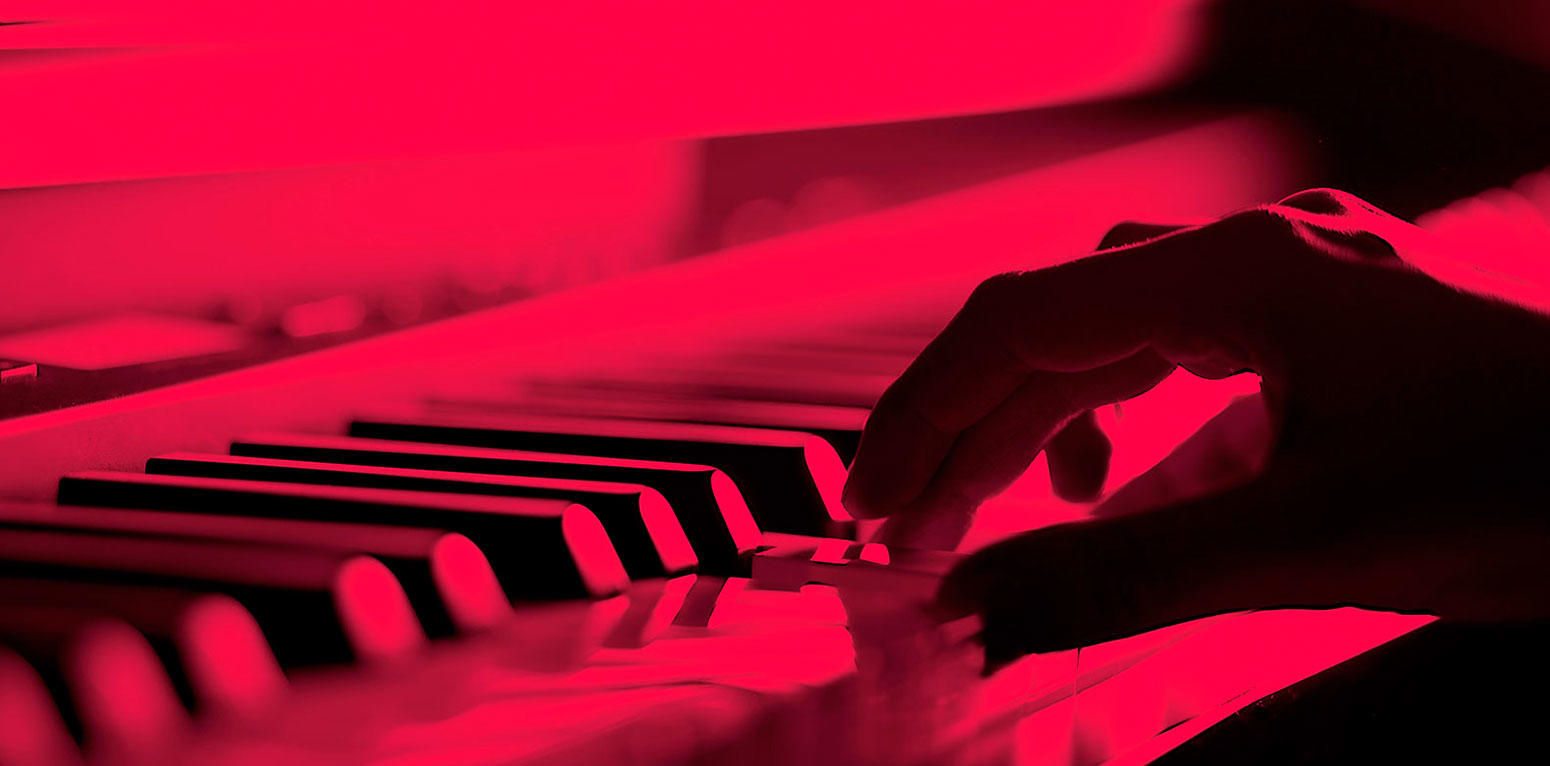
" Concerto pour hautbois solo et orchestre "
Concerto for oboe and orchestra
Billaudot
SÉLECTION 2011
- Nominated for : The Young Audience Prize 2012
- Nominated for : The Musical Composition Prize 2012
Over the past ten years, Marc-André Dalbavie has risen to prominence as a leading voice
among the new generation of French composers. Born in 1961 in Neuilly-sur-Seine, Dalbavie had his first music lessons at the age of six. By the time he was twenty, he was studying at the Paris Conservatory of Music where he later graduated in several disciplines and won several major prizes. In 1984 he attended Franco Donatoni’s class in Siena, and in 1985 joined the research department at IRCAM, where he learned the basic of digital synthesis and computer-assisted composition. In 1987, he studied conducting with Pierre Boulez. In the early 1990’s, he moved in Berlin at the invitation of the German Academy Austauschdienst (DAAD exchange programme) and in 1994 he was awarded with the Rome Prize. In 1986, he conducted the Paris premiere of his first major piece: Diadèmes (a commission of the French government), at the Centre Pompidou. Since then, his music has been performed all over the world. In 1988, Pierre Boulez conducted Diadèmes at the Brooklyn Music Academy. More recently, the piece has been played by the London Sinfonietta at the Queen Elizabeth Hall, later at the Los Angeles Philharmonie, and at the Helsinki Festival under the direction of Esa-Pekka Salonen. Also played in Moscow, London, Berlin and Tokyo among others.
In 1994 Pierre Boulez conducted Seuils at the Salzburg Festival. In 1995 Offertoires, for men’s choir and orchestra was performed by the Israel Philharmonic Orchestra. In 1996 Eiichi Chijiiwa, violin, and the Orchestre National de France premiere Concerto pour violon in Donaueschingen (Germany).
In 1997 Marc-André Dalbavie was appointed professor of orchestration at the Paris Conservatory of Music. That same year, he was awarded with the Berlin Philharmonic Salzburger Osterfestspiele Prize. His opera Correspondances and Non-lieu for women’s choir and instrumental ensemble was premiered respectively in Mulhouse (France) and Stuttgart (Germany).
In December 1998, the “USA Today” designated Marc-André Dalbavie “Best Young Composer of the Year”. The Cleveland Orchestra appointed him ‘Daniel Lewis composer Fellow’ serving for the next two years. He was commissioned several pieces, one of which
will be later conducted by Pierre Boulez during the 2000/2001 concert season of the Chicago Symphony Orchestra.
In May 1999 premiere of his concerto for orchestra, The Dream of the Unified Space, by the
Minnesota orchestra, conducting by Eiji Oue. The same year he also composed for the clarinettist Sabine Meyer, Antiphonie, a concerto for clarinet, basset horn and orchestra, which was premiered by the Rheinischer Philharmonie Staatsorchester (Germany). In 2000 he was in residence with the Minneapolis Orchestra. At the Summer Festival, M-A Dalbavie conducted the premiere of Sextine Cyclus, with soprano Joanna Mongiardo. Back in Paris in 2001, premiere of Mobiles, for choir and instrumental ensemble, with the Ensemble InterContemporain and Accentus chamber choir. He was also in residence with the Orchestre de Paris for four seasons. French premiere of Concertate il suono.
In 2002 New York premiere, at the Carnegie Hall of Color, work commissioned and performed by the Orchestre de Paris, under the direction of Christophe Eschenbach.
Dalbavie worked on several project commissioned by major institutions and orchestras, such as Cleveland Orchestra, Chicago, the ‘Proms’, Berlin Philharmonie, Montreal and Zurich Tonhalle, NHK of Tokyo, Carnegie Hall of New York.
In January 2004 M-A Dalbavie won the Chevalier des Arts et Lettres award, given by the French Ministry of Culture.
February 2005 invited at the « Présences » festival. Musical creation’s festival. Premiere of
Sinfonietta and Comptine and performance of 17 other works of his catalogue.
Release of his book « Le son en tout sens ».
2006 premiere of the Concerto pour piano and orchestra, commissioned by the BBC for the Proms and « Carte Blanche », at the Suntory Hall of Tokyo, with the premiere of Variations Orchestrales by the Tokyo Philharmonic Orchestra.
2007, premiere of La Source d’un Regard, commissioned by the Royal Concertgebouw from Amsterdam.
2008, premiere of Sonnets by P. Jaroussky and the Orchestre National de Lyon, conducting
by T. Fischer.
Grammy Award nomination for the “best classical contemporary composition” for his record Concerto pour flûte and orchestra. Performed by Emmanuel Pahud and the Orchestre Philharmonique de Radio France, conducting by Peter Eotvos.
Cd release, Variations orchestrales, Sinfonietta and Rocks under the water by the Philharmonic Orchestra of Monte carlo, conducting by Marc-André Dalbavie.
As early as 1982, M-A Dalbavie, along with several other composers of his generation, started exploring the potential of spectral music, most specifically the redefinition of timbre
and the concept of process. He has enriched these compositional techniques with polyphony and rhythm, combined with principles of recurrence, and worked on heterogeneity through the means of electronics, making use of all applications of computer music and acoustics.
While timbre and color marked his work in the 1980s (Miroirs transparents, Diadèmes...), the 1990s are remarkable for his innovative use of space, place and context. Seuils is one of the first landmarks of this period, with electronic sound sources placed all around the audience and a text referring to the space in which it is used. The piece also marked the beginning of the composer’s collaboration with author Guy Lelong, continued with Non-lieu and Mobiles and the musical event Correspondances, in collaboration with artist and stage-director Patrice Hamel. The use of baroque instruments links Concertino to 17th century composer Matthew Locke’s Curtain Tune. Offertoire for men’s choir and symphony orchestra suggests virtual spaces simulated by the choir-writing. Concerto pour violon launched a series of pieces based on the spatialization of the orchestra. In Non-lieu, for example, the stage is totally empty; the four women’s choirs as well as the instrumental ensemble are placed selectively throughout the hall. The Dream of the Unified Space, Antiphonie and Concertate il Suono, composed respectively for the Minneapolis Orchestra, the Rheinpfalz Orchestra, and the Cleveland Orchestra, all develop the concept of the movement of sound in space. And Mobiles, for choir and orchestra, a site-specific composition for the Cité de la Musique in Paris, starts with the confused noise of conversations - seemingly coming from the audience - rising above the sound of the orchestra tuning up. During his residence at the Orchestre de Paris, Dalbavie, like other composers of his generation, turned again to symphonic writing, with the avowed aim of opening new perspectives and building up a repertoire which brings orchestral writing resolutely into modernity. What better proof of the composer’s successful achievements than Color, Ciaccona, and more recently, The Rocks under the Water, composed for the Cleveland Orchestra to celebrate a building by architect Frank O. Gehry. Meanwhile, the composer started a work on the orchestra, with the aim to explore all the potentialities, starting with the sound diffraction till the symphonic unit, sliding from one to another according to a generalized morphing principle. This innovative context lifted several modernism banning. He restored the consonance and the rhythmic pulsation, spread again the concerto genre, or some specific instrumentation of chamber music; he gave back to the voice the melodic fluidity, and had a rethink on the connection text/music.
NOTICE
Progamm note :
Writing this work last year especially for tonight's soloist, Marc-André Dalbavie decided, according to his own account, to add another chapter to an oboe story he had begun in 1998 with a solo piece, Interlude IV, and had continued in 2005 with a small-scale concerto, La marche des transitoires. Up to that point the story was partly about how an individual's behaviour changes with context. The oboe has a certain character by itself in the original Interlude and a different (but related) one in the company of La marche's 10-piece ensemble.
Now, in the concerto, it is different again, responding to and sometimes challenging the everrefreshing musical landscape unfolded around it by a symphony orchestra.
At the same time, this new concerto has its place in a much longer story, that of the oboe's
developing repertoire. Dalbavie has said that a further point of departure, besides his own history with the oboe, was the dazzling virtuosity brought to the instrument in the latter part of the 19th century by the Sicilian oboistcomposer Antonio Pasculli (1842- 1924), whose works include operatic fantasies streaming with high-speed scales and arpeggios. Similar brilliance is required of the soloist here, except that, though we may feel the same kind of astonishment, all this flurrying is not decoration and display but rather the music's source, the whirl of sound out from which motifs and harmonies will be drawn.
To lessons from 19th-century showmanship are added others from such composers as Wagner or Sibelius or Ravel, that characterful musical ideas can gradually come into view, or disappear. within a mist of elementary particles.
In this case that mist arises almost from nothing: from a soft chord and air. The chord is one the soloist produces by clever fingering, with support and projection from the strings playing harmonies; the air comes also from the solo oboe, sound that becomes more defined as it circles down in chromatic steps, soon with other woodwinds joining in. Perhaps prompted by the harmony gathering in the strings, the wheeling turns into repeating threenote motifs, bringing in light and colour. Exotic scales and harmonies might start to suggest the musical world of a century ago: Debussy and early Stravinsky but with a modern kind of engineered abstractness. Textures of repeating notes and patterns at once punctuate and stimulate the dynamic process.
Eventually the triplet shapes coalesce into great swirls, still involving the soloist and fellow
woodwind players, and then into more scales and arpeggios that gradually settle down into melody. As the glittering strings and swooping woodwinds (with piano and harp) come to agree on an F in the treble register. the music slows and the oboe starts to sing. Its song, beautifully doubled by changing groups of instruments, grows ever warmer before coming to rest on the F from which it set out. The soloist then returns to running scales and answers an outburst from the orchestra by repeating its chord from the opening. For a brief moment it might appear that the work is beginning all over again, but the ebullient finale turns out to fuse the fleetness of the first section with the lyricism that followed, until the soloist, breaking free, spins the music up to a high full stop.
Programme note © Poul Griffiths

